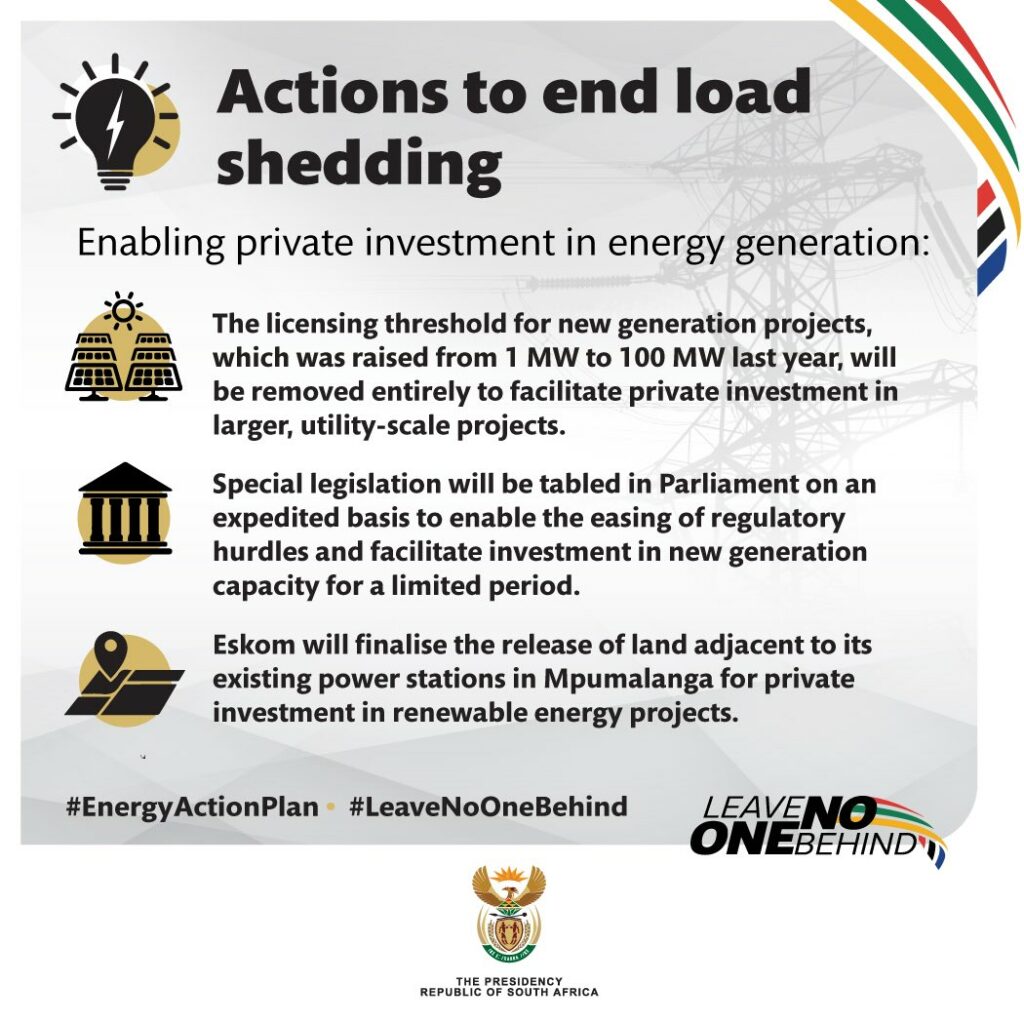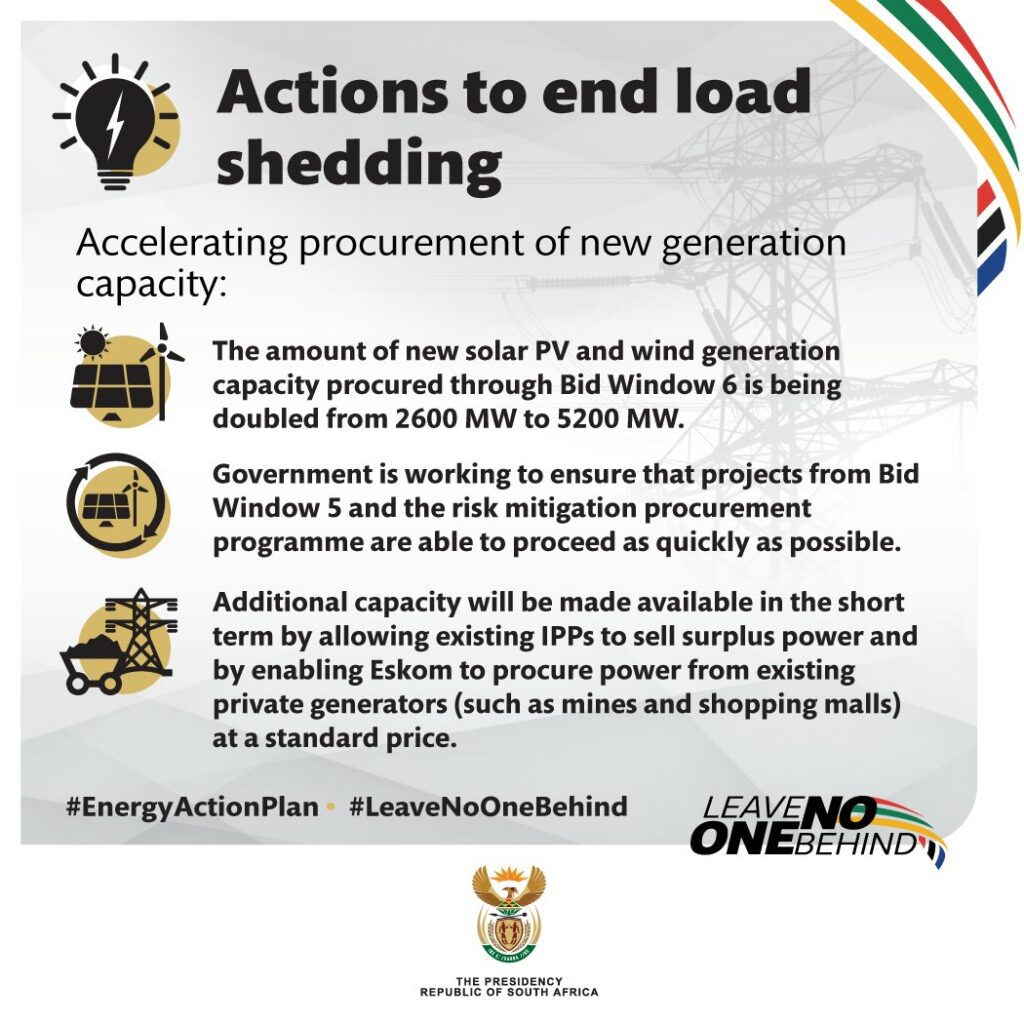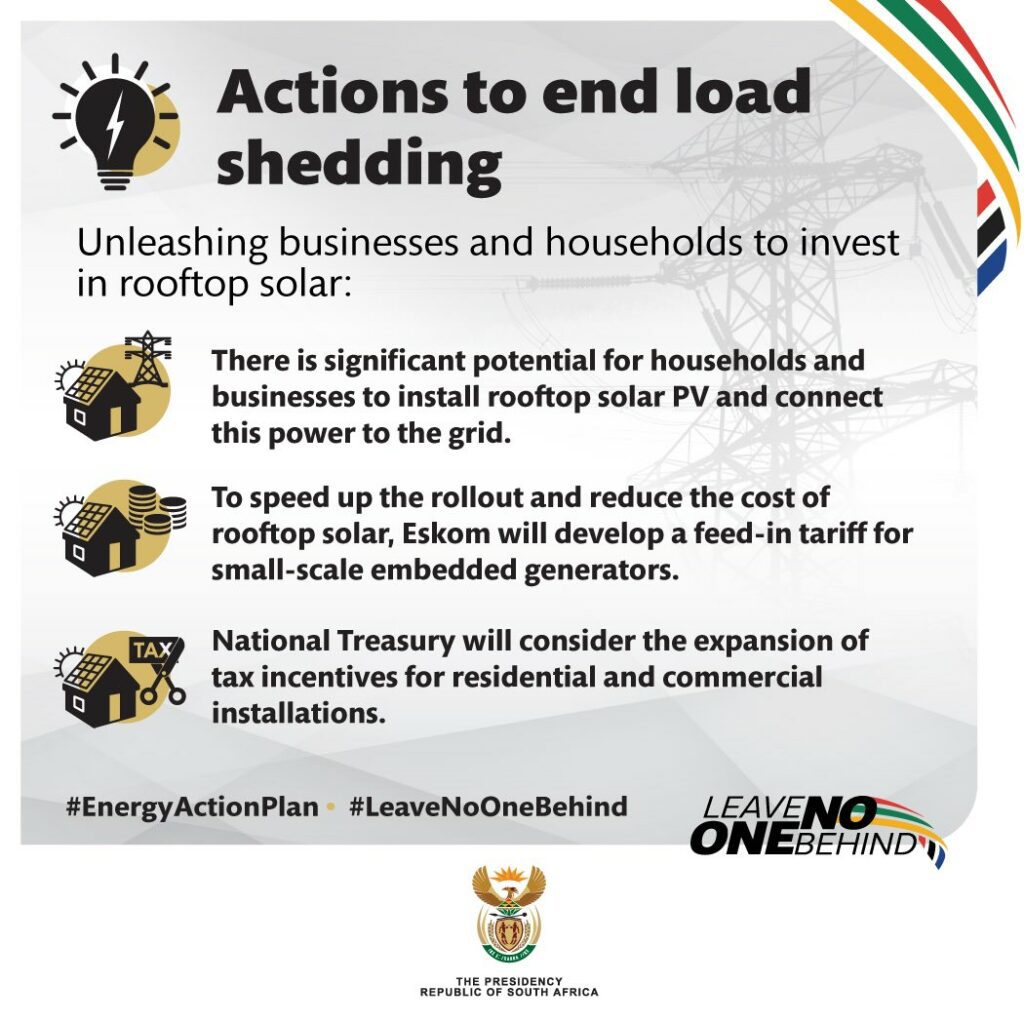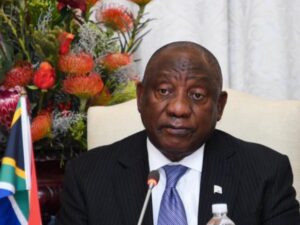President Cyril Ramaphosa has announced a set of new emergency measures to deal with South Africa’s current electricity crisis.
During his address on Monday night, Ramaphosa compared the energy crisis to the battle against Covid-19, and urged South Africans to do their bit by installing solar power, avoiding illegal connections and using electricity sparingly. The crisis that we are facing requires that we should take bold, courageous and decisive action to close the electricity gap. As a government, we are announcing a number of interventions to overcome the immediate crisis,” he said. Ramaphosa acknowledged that the recent bout of Stage 6 rolling blackouts had left many South Africans fed up, seeing as it has also been more than a decade without a reliable energy source. He promised that the new measures would transform the electricity sector and all additional measures will achieve long-term energy security and end load shedding for good. The measure includes:- Improving the performance of Eskom’s existing fleet of power stations by seeing that Eskom increases its budget allocated for critical maintenance over the next 12 months
- Boosting the recruitment of skilled workers, including former senior Eskom plant managers and engineers, from the private sector
- Cutting red tape that has made it difficult for Eskom to buy maintenance spares and equipment within the required period to effect repairs
- Improve logistics to ensure that diesel-fired turbines are supplied in a timely fashion;
- Allow Eskom to buy excess power from independent private producers;
- Import more power from countries in the region;
- Implement a programme to incentivise the efficient use of power to cut demand by 600 megawatts;
- Easing local content requirements so that renewable-power projects awarded in the so-called Bid Window 5 can go ahead;
- Boosting the size of the sixth bid window and expediting further rounds;
- Announce a plan to deal with Eskom’s debt before October.

They will also be doubling the amount of new generation capacity procured through Bid Window 6 for wind and solar power from 2,600MW to 5,200MW.
Minister of Mineral Resources and Energy Gwede Mantashe will issue a determination for the remaining allocations in the Integrated Resource Plan 2019 and will open further bid windows “on an expedited basis”.








